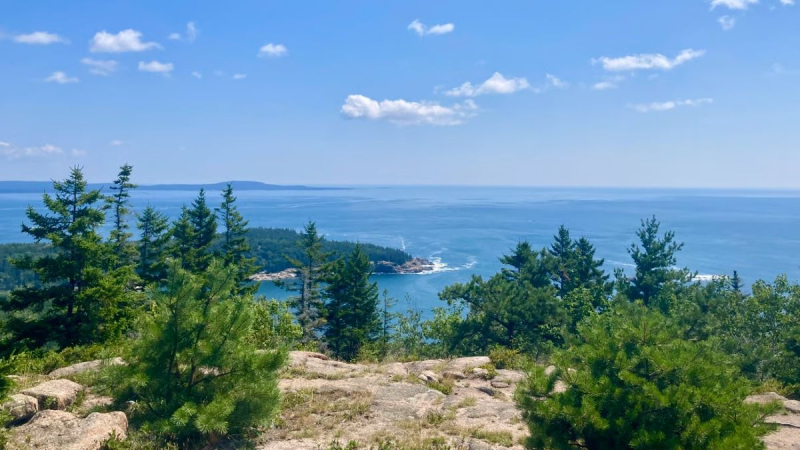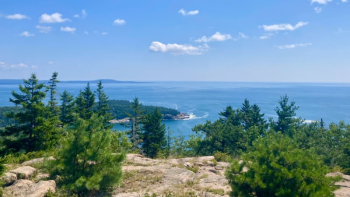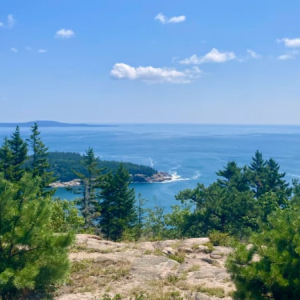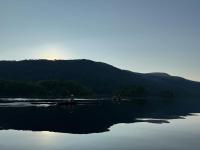What the public lands fight means for Maine
Maine is about as far away as you can get from the bulk of America’s federal public lands, the vast majority of which are concentrated in a dozen states west of the Mississippi River — a result of the nation’s history of westward expansion.
Whereas states like Utah, Nevada and Alaska are each between 60 and 80 percent federal land, just 1.5 percent of Maine is federally managed.
But Mainers have as much of a stake in the current political fight over the future of federal resources as anyone else. Public lands, waters and wildlife are part of our birthright as American citizens, a public domain that we all collectively own, regardless of our proximity.
Over the last five months, the Trump administration has worked to slash funding for federal land management agencies and conservation programs; open up more public lands to fossil fuel drilling, mining and other extractive development; and lay off or force out thousands of park rangers and other civil servants.
The words “protect” and “conserve” have been largely absent from the administration’s vocabulary, as it prioritizes dismantling environmental safeguards in its quest for so-called “energy dominance.” Meanwhile, Congress is considering federal land sales to help offset Trump’s tax and spending cuts — a contentious proposal that House lawmakers ultimately yanked from that chamber’s version of Trump’s so-called “big, beautiful” budget package, but that Senate Republicans resurrected this week.
During a recent congressional hearing to outline the Trump administration’s budget proposal for fiscal year 2026, Interior Secretary Doug Burgum invoked Maine and other East Coast states to argue that Western states with large amounts of federal land are at an economic disadvantage.
“We’ve got states in the East, including the 13 states that were part of the original colonies, none of them have more than 2 percent of federal land,” he said. “I don’t think any of them would stand up and say, ‘We need more federal ownership in our states.’”
Burgum’s statement is both inaccurate — nine of the original 13 states have more than 2 percent federal land, with New Hampshire on top at 14 percent — and casts aside the history of the nation’s East-to-West settlement.
David Feinman, vice president of government affairs at the Conservation Lands Foundation, said it also seemed designed to pit regions of the country against each other.
“Americans across the political spectrum in every state support public land protections, whether it’s Maine or Utah or anywhere else,” Feinman said. “Regardless of the secretary’s narratives, these lands do belong to everybody.”
Rep. Chellie Pingree (D-Maine), Feinman and others The Maine Monitor spoke to encouraged Mainers to pay close attention to the battle taking place in Washington, as it will likely impact everything from visits to national parks to our ability to stave off the worst impacts of climate change.
“It does impact all of us,” Pingree said. “If there’s one thing that the changing climate has taught us it’s that we’re all in this together, that overheating in one part of the country impacts another part of the country, that our weather is all impacted, that we need land to sequester carbon. There’s just a whole variety of reasons that we need undeveloped lands in this country wherever it may be.”
Pingree worries what the current turmoil inside the National Park Service and other federal agencies will mean not only for federally managed sites in Maine, including Acadia National Park and Katahdin Woods and Waters National Monument, but parks, monuments and wildlife refuges around the country.
Since Trump took office, NPS has lost 13 percent of its workforce, according to the National Parks Conservation Association, and the administration’s budget proposal calls for slashing more than $1 billion from NPS next year, approximately one-third of its entire operating budget. Current staffing shortages have already created numerous operational issues and public safety concerns at America’s national parks.
“It’s a real crime what they’ve done to these precious jewels,” Pingree said.
Sen. Angus King (I-Maine) echoed that sentiment during a budget hearing on Tuesday, telling Burgum “it’s hard for me to understand how gutting ‘America’s best idea’ isn’t America’s worst idea.”
Trump’s agenda also threatens to stymie future conservation, outdoor recreation and forest protection efforts here at home. Among other things, Trump’s Department of Government Efficiency, or DOGE, froze $68 million in funding for the U.S. Department of Agriculture’s Forest Legacy Program, which focuses on protecting private forest lands through conservation easements and land acquisitions. The program is one of several funded through the Land and Water Conservation Fund, or LWCF, which uses offshore oil and gas drilling royalties to buy land and establish and protect parks, trails, wildlife refuges, forests and important wildlife habitat.
In Maine, the FLP has been key to safeguarding more than 700,000 acres of forested land, according to the LWCF Coalition.
As for LWCF as a whole, Trump’s 2026 budget request proposes diverting $387 million from the fund to pay for deferred maintenance at the National Park Service and other federal land management agencies — a move that Amy Lindholm, director of federal affairs at the Appalachian Mountain Club and a national coordinator at the LWCF Coalition, said would “rob Peter to pay Paul.”
Over the last five decades, Maine has received more than $220 million in LWCF funding, which has helped boost protection for places like Acadia and the Appalachian National Scenic Trail as well as supported hundreds of conservation projects via state grants.
“It’s really important that we have these tools fully funded, because there’s always going to be developers with deep pockets who want to acquire pieces of land,” Lindholm said. “We just have to balance that out a little bit with access for the local community and for growing and diversifying rural economies.”
Andy Cutko, director of the Maine Bureau of Parks and Lands, said cuts to federal conservation funding could impede progress toward Maine’s goal of conserving 30 percent of its land by 2030, part of Maine’s four-year climate plan.
“Programs like the Land and Water Conservation Fund and Forest Legacy protect forests, strengthen the forest products sector, support rural communities, and expand outdoor recreation,” Cutko said in an email. “They are vital tools for protecting the natural resources that are the essence of Maine.”
In the absence of more public land — just 7 percent of Maine is owned by federal, state and local governments — a network of land trusts has become a model for conservation and for meeting the growing demand for outdoor access in the Pine Tree State.
More than 80 land trusts have collectively safeguarded nearly three million acres, almost 15 percent of all land in the state, primarily through conservation easements on private land, according to a recent report from the Maine Land Trust Network.
“Apart from what’s happening out West, the Maine model works,” said Jeff Romano, public policy director at Maine Coast Heritage Trust, which runs the Maine Land Trust Network. “Hopefully we can push back some of these cuts to agencies and conservation programs because we do rely on that collaboration with those entities to do some good work here.”
At the end of the day, public demand for open space and protecting nature isn’t going anywhere, Lindholm said.
“Everybody loves the outdoors,” she said. “It’s the thing that brings people together across the political spectrum.”
This story was originally published by The Maine Monitor, a nonprofit civic news organization. To get regular coverage from The Monitor, sign up for a free Monitor newsletter here.



























